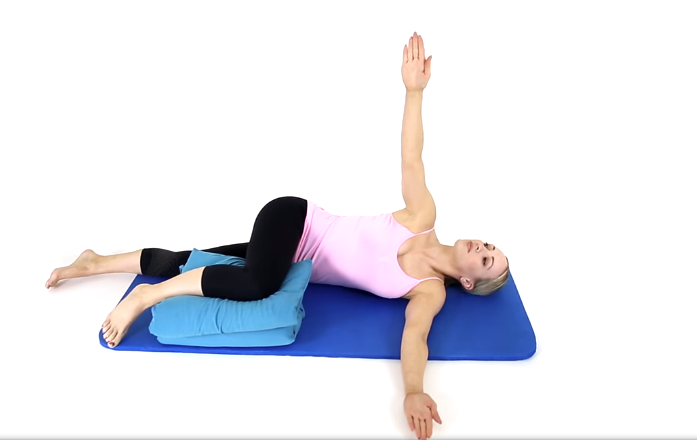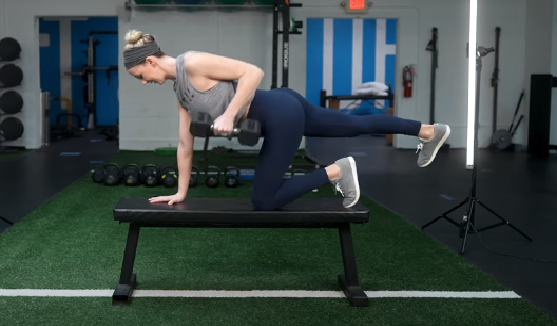The Hindu Squat is not just a regular exercise that strengthens your thighs or the lower part of your body in general. It’s more powerful than that and has many benefits, which is why it attracts the attention of many athletes.
If you’re used to regular squat exercises, you’ll easily adapt to the Hindu Squat. It’s an exercise that relies on the full coordination of your body, along with your breathing, to perform the correct Hindu Squat.
In this post, you will learn everything about the Hindu Squat – how to do it, mistakes to avoid, its benefits, and how to integrate it into your workout routine.
What Is a Hindu Squat ?
If you’ve visited India before, you may have noticed that many people naturally adopt the Hindu Squat position while sitting.
This is connected to their daily habits for a long time, hence the name ‘Hindu,’ referring to India or the Indians.
The term ‘Hindu Squat’ likely originates from its association with the traditional physical culture of Hindus and yoga practices.
The Hindu Squat has been embraced as a form of physical preparation in India and has gained widespread popularity among yoga practitioners and fitness enthusiasts for several decades.
It has become recognized by many yoga practitioners worldwide and is now part of modern fitness routines.

How To Do a Hindu Squat?
The Hindu Squat, as we mentioned in the introduction, is not like the regular squat. Therefore, it requires a certain type of preparation and attention.
It also demands a higher tempo while maintaining a continuous motion until the completion of the repetitions.
So, here’s a Video and a comprehensive guide to lead you in performing Hindu Squats perfectly and professionally.
1. Starting Position:
- Stand with your feet shoulder-width apart.
- Keep your arms relaxed at your sides.
2. Descent:
- Inhale and begin to lower your body by bending your knees.
- Simultaneously, bring your arms forward and down in a sweeping motion.
3. Full Squat:
- Continue lowering your body until your thighs are parallel to the ground or as far as comfortable.
- Your heels may lift slightly, and your knees will extend beyond your toes.
4. Ascent:
- Exhale and push through your heels to rise back up.
- Simultaneously, sweep your arms backward and upward.
5. Full Extension:
- Stand tall with your arms reaching overhead.
- Ensure a smooth and continuous motion throughout the exercise.
6. Repetition:
- Repeat the movement in a fluid and controlled manner.
- Aim for a consistent pace, and coordinate your breathing with the squatting motion.
Related Exercise : Elevated Sumo Squat
Coach Tips:
- Keep your back straight throughout the movement.
- Engage your core muscles for stability.
- Pay attention to the flow of the exercise, making it a continuous, dynamic motion.
Coach Note:
- The Hindu Squat is often performed with a higher repetition range due to its rhythmic nature.
- Adapt the depth of your squat based on your flexibility and comfort level.
Hindu Squat Muscle Worked
The Hindu Squat is a compound exercise that engages multiple joints and targets various muscle groups. Therefore, it can be said that the Hindu Squat is a full-body exercise.
Hindu squats targets the thigh muscles more intensely. It is somewhat similar to the hack squat as it requires full extension of the thigh muscles for the movement, keeping the toes comfortable. This places additional pressure on the front thigh muscles.
Just follow the instructions above to ensure proper muscle targeting.
Here are the muscles targeted during the Hindu Squat exercise.


Quadriceps:
– The quadriceps, located on the front of your thighs, are heavily engaged during the upward phase of the squat.
– As you rise from the squatting position, the quadriceps contract to straighten the knee joints.
Hamstrings:
– The hamstrings, located on the back of your thighs, play a role in both the descent and ascent phases.
– They are engaged as you bend your knees to lower into the squat and then work to extend the hips during the upward phase.
Glutes:
– The gluteal muscles, or the buttocks, are activated during the upward phase of the squat.
– As you rise, your glutes contract to push your hips forward.
Calves:
– The calf muscles are involved, particularly during the upward phase, as you push through your heels to stand.
– They help with ankle extension.
Core Muscles:
– The muscles of the core, including the abdominals and obliques, are engaged for stability and balance.
– They help maintain an upright posture throughout the exercise.
Hip Flexors:
– The hip flexor muscles are involved during both the descent and ascent phases.
– They help control the movement of the hips and thighs.
Cardiovascular System:
– The continuous and rhythmic nature of the Hindu Squat makes it a cardiovascular exercise, engaging the heart and lungs.
– This contributes to improved cardiovascular fitness over time.
Hindu Squat Mistakes
Poor Squatting Form:
The Mistake is: Allowing the knees to extend significantly beyond the toes or not maintaining a straight back.
Correction: Ensure proper squat form by keeping your back straight, and align your knees with your feet to prevent unnecessary stress on the joints.
Inconsistent Range of Motion:
The Mistake is: Not completing a full range of motion by either not descending low enough or not fully extending during the upward phase.
Correction: Perform Hindu Squats through a complete range of motion, descending as low as comfortable and fully extending during each repetition.
Lack of Control and Stability:
The Mistake is: Performing the exercise too quickly without control, leading to instability and potential loss of balance.
Correction: Focus on a controlled and rhythmic motion, maintaining stability throughout the exercise to avoid unnecessary strain or potential injury.
Neglecting Core Engagement:
The Mistake is: Not actively engaging the core muscles during the squatting motion, leading to instability and decreased effectiveness.
Correction: Tighten your core muscles throughout the exercise to provide stability and protect your lower back. This also enhances the overall effectiveness of the movement.
Benefits Of Hindu Squat
Full-Body Engagement:
- Hindu squats engage multiple muscle groups, providing a comprehensive workout for the entire body.
Improved Lower Body Strength:
- Regular practice strengthens the quadriceps, hamstrings, and glutes, enhancing lower body strength.
Cardiovascular Conditioning:
- The dynamic and rhythmic nature of Hindu squats contributes to improved cardiovascular fitness.
Enhanced Flexibility:
- The exercise promotes flexibility in the hips, knees, and ankles through a full range of motion.
Bodyweight Resistance:
- Hindu squats rely on body weight, making them accessible and convenient for various fitness levels.
Calorie Burn:
- The continuous movement elevates heart rate, aiding in calorie burn and weight management.
Functional Fitness:
- Mimicking natural squatting motions, Hindu squats enhance functional fitness for everyday activities.
Joint Mobility:
- The exercise supports joint mobility by promoting flexibility and fluid movement.
Balance and Coordination:
- Regular practice improves balance and coordination through controlled squatting motions.
Time-Efficient Exercise:
- Hindu squats offer an effective full-body workout in a relatively short amount of time.
The Difference Between Hindu Squat And Regular Squat
While Hindu squats involve a dynamic and continuous movement pattern, with arms actively engaged, creating a flowing motion, regular squats, on the other hand, follow a more controlled and deliberate descent and ascent.
In Hindu squats, muscle engagement includes the quadriceps, hamstrings, glutes, and calves, providing a cardiovascular workout, while regular squats primarily target the lower body muscles.
The breathing pattern in Hindu squats is rhythmic, synchronized with the dynamic movement, whereas regular squats often emphasize controlled breathing with an inhale during descent and an exhale during ascent.
The intensity and speed differ, with Hindu squats performed at a faster pace, adding to their overall intensity, while regular squats can be executed at a controlled pace, allowing for variations based on fitness goals.
Hindu Squat Workout Routine
Warm-up (5-10 minutes):
- Jumping jacks: 2 minutes
- High knees: 2 minutes
- Arm circles: 1 minute
- Bodyweight lunges: 2 minutes
Workout:
1. Hindu Squats:
- Perform 3 sets of 15-20 reps.
- Focus on the continuous and rhythmic movement.
2. Bodyweight Lunges:
- Perform 3 sets of 12-15 reps per leg.
- Step forward into a lunge, ensuring your knee doesn’t extend past your toes.
3. Jumping Jacks:
- Perform 3 sets of 1 minute each.
- Engage your core and keep a steady pace.
4. Plank:
- Hold for 3 sets, starting with 30 seconds and increasing gradually.
- Maintain a straight line from head to heels.
5. Calf Raises:
- Perform 3 sets of 20 reps.
- Rise onto your toes, then lower your heels back down.
Cooldown (5-10 minutes):
- Slow jogging or brisk walking: 5 minutes
- Static stretching (focus on legs): 5 minutes
FAQ
Is Hindu Squat suitable for beginners?
Yes, Hindu Squats can be suitable for beginners. Start with a lower number of repetitions and focus on mastering the form before gradually increasing intensity.
Can Hindu Squats help with cardiovascular fitness?
Absolutely. The dynamic and continuous nature of Hindu Squats engages the cardiovascular system, making it an effective exercise for improving cardiovascular fitness and endurance.
How many Hindu squats per day?
The number of Hindu squats per day can vary based on your fitness level and goals.
Beginners may start with 3 sets of 10-15 reps, while advanced individuals might aim for 100 or more. Listen to your body and gradually increase as your strength improves.
Do Hindu squats increase testosterone?
While exercise, including Hindu squats, can contribute to overall hormonal health, the direct impact on testosterone is not fully established.
However, regular physical activity, including compound exercises like Hindu squats, can positively influence hormonal balance and overall well-being.
Are Hindu Squats Bad For Your Knees
The question has been addressed, with the Healthline blog noting that many people believe Hindu squats pose a risk to the knees, but there is no concrete evidence to support this.
On the contrary, Hindu squats can help improve knee mobility and strengthen them.



